On test: Land Rover’s new Defender 110 D240
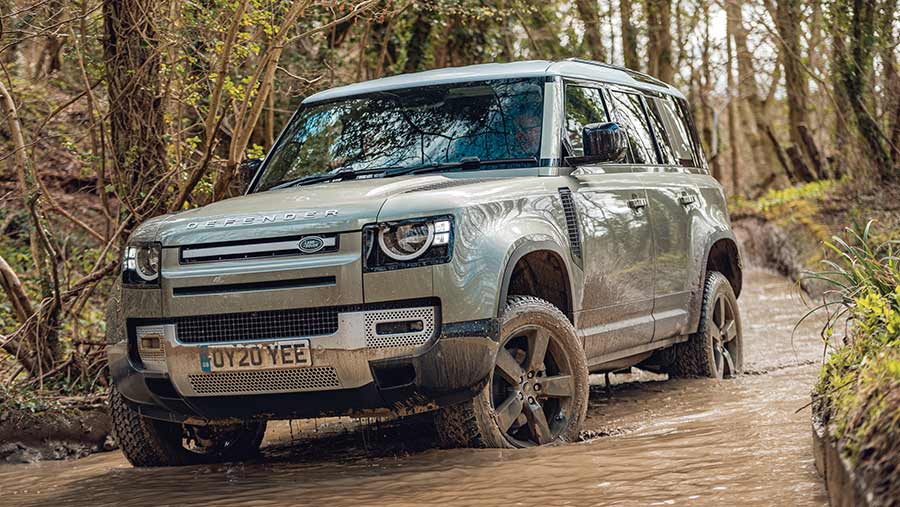
The options for rural transport, whether for work or pleasure, just haven’t been the same since Land Rover culled its iconic old Defender.
Uncomfortable and uneconomical it may have been, but its charming deficiencies, mud-beating diff-locks and dent-friendly panels – plus the fact that it wafted a grubby middle finger at Land Rover’s posh ‘n’ pricey priorities – made it the farming 4×4 flag-bearer for the entirety of its 67-year career.
Before the guillotine finally dropped, thousands fought to bag a farewell model, forcing the Solihull production facility into overdrive.
But what of its successor? Shortcomings cured? Character retained?
Fortunately, it remains by far the most charismatic face in the firm’s increasingly samey SUV line-up. The square, upright stance, vertical backend and general boxiness mean the 1948 Series One – the car that carted livestock, pulled ploughs and provided mobility to thousands – is still here in spirit.
See also: Off-road vehicle four-wheel drive systems explained
This time the vehicle has a much wider remit. As well as appealing to those who work, or at least own, the land, Land Rover wants interest from its middle-class constituency.
Farmers may well be irked by the prospect of sharing the Defender with school-run mums and inner-city hipsters, not least because it means the cars have more toys and the sort of comfort many agriculturalists will see as indulgent.
That stuff comes at a price, too, with the 110 – the first model to be launched – starting at £45,560. The smaller 90 shaves £5k off that figure, but the commercial Hard Top derivative is likely to dominate farming sales at £35,500.
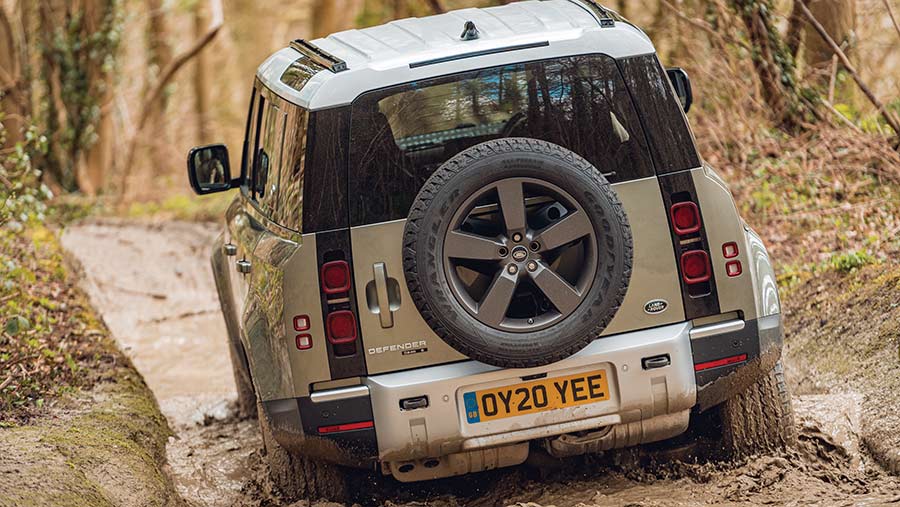
How does it look?
Design of the Defender appears to have started in traditional fashion: with a set square. An abundance of right angles, albeit softened to a curve, feature across the bodywork, lights and door mirrors.
Yet this time the quirky appearance is the consequence of a multimillion-pound design process, rather than the gradual evolution of a working tool.
Interior changes are even more drastic. Space is no longer the forgotten word and elbow room won’t be the butt of all jokes – instead, comfort reigns.
Land Rover has tried desperately to deliver a rough-edged look, with exposed fixings on doors and console, chunky grab handles and rubber floor mats (underneath the carpets) designed to replicate the primitive design of its predecessor.
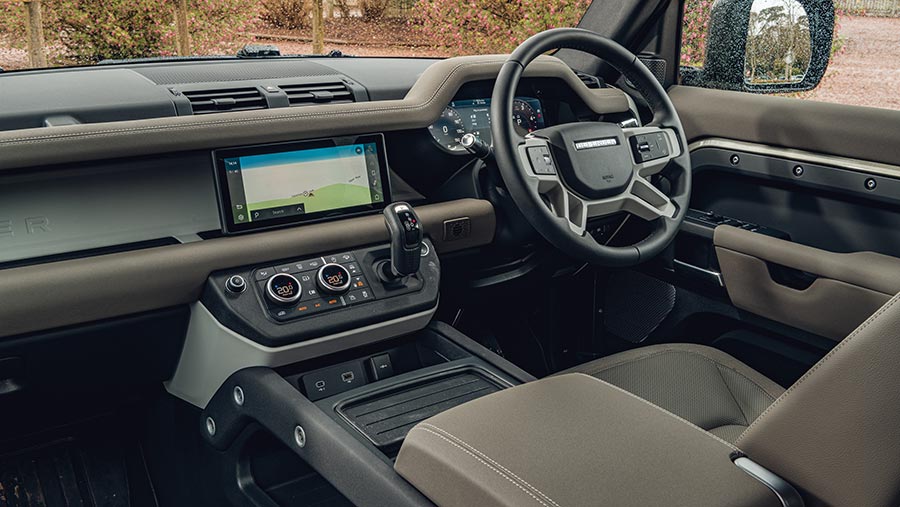
The minimalist dash is the centrepiece, housing a slick new 10in Pivi Pro infotainment system, gear-shifter and a few essential buttons and dials – predominantly for climate control and off-roading.
The lack of clutter frees-up space for an optional middle seat in the front row, so it can seat five, six or seven (using fold-out boot seats).
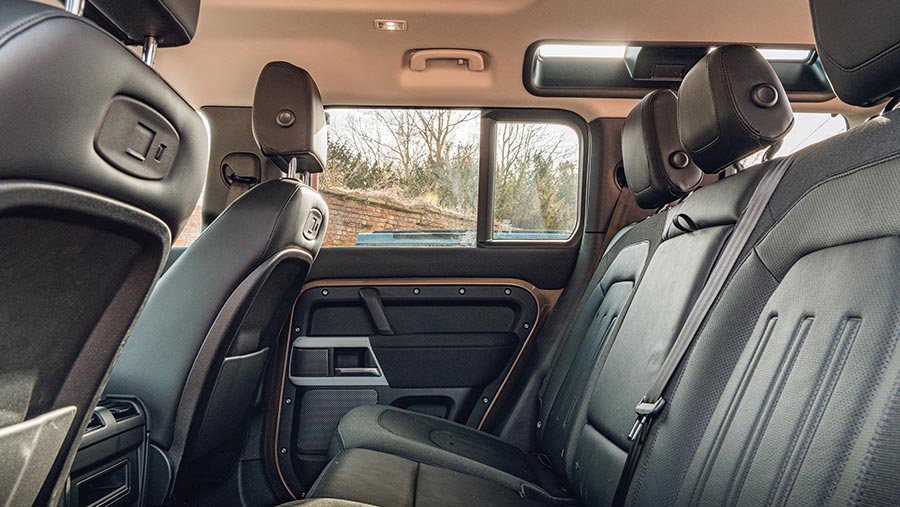
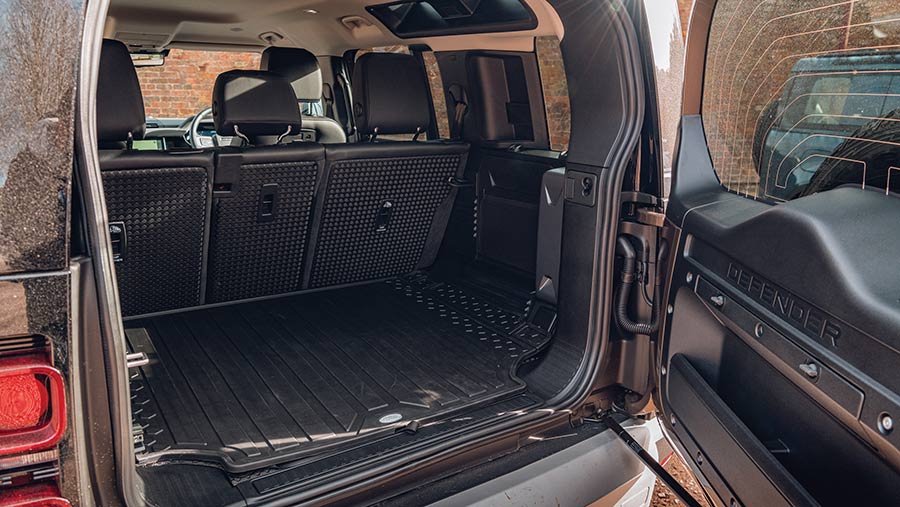
An exposed aluminium cross beam forms a storage shelf across the full width, most likely for stashing designer sunglasses and skin moisturiser, rather than spanners, syringes and string.
There are plenty of charging sockets, too – both USB and 12V – plus the option of a three pin, 230V domestic socket in the boot.
What’s it like off-road?
The big positive is that the Defender remains a dab hand off-asphalt, thanks to its combination of twin-speed transfer box and pair of driveline differentials.
A move away from body-on-chassis to a lightweight, ultra-stiff aluminium monocoque structure may make it far less fixable, but should also eliminate notorious rust troublespots.
The old-school solid axles have also been ushered out; double wishbones at the front and integral rear links replace them.
Independent air suspension is standard, allowing cushion inflation to lift ground clearance from almost 30cm – a 2cm improvement on the Discovery – to nearer 450mm for fiendish conditions.
Fortunately, for those clambering in wearing frilly dresses, a modesty-saving Elegant Arrival function lowers the body by 50mm for embarkation.
There are short overhangs (845mm front, 891mm rear), too, contributing to monster approach and departure angles that minimise the risk of catching the body during white-knuckle off-roading.
However, a certain amount of digital dexterity is required to get the best from the permanent all-wheel- drive system because control of the centre and rear diffs, and low range, are now the work of Land Rover’s Terrain Response 2 system.
For the most part, a clever auto mode will suffice, engaging the diffs as it sees fit, but keen drivers are given the option of fine-tuning things with three selectable grades for throttle and gearbox response, steering and traction control.
Engine and transmission
Two slightly rumbly twin-turbo four-cylinder diesels offer an unimpressive combined economy of roughly 30mpg. Part of the problem is its burdensome weight – up almost 400kg on the old model to more than 2.3t.
The smaller D200 (numbering denotes horsepower) will hit 60mph in 9.9sec, while the D240 does the same sprint in 8.7sec.
Petrol derivatives provide more pace, with the four-cylinder turbocharged P300 clocking 7.7sec and the P400 – powered by an inline six – managing 6.1sec.
The latter uses a mild hybrid system to harvest energy wasted during deceleration, which is stored in 48V lithium-ion battery and used to dish out extra torque and trim engine load during take-off. A plug-in electric version is slated for next year, too.
All the engines run through a slick automatic eight-speed ZF transmission that turns beefed-up driveshafts and half-shafts.
We didn’t have the opportunity to tow but the stats make good reading, with capacity hitting the 3,500kg ceiling and payload at 900kg. However, the electrically deployable towbar (£1,050) is just one of a wallet-battering list of extras that also includes an electric winch.
Farmers Weekly verdict
Comfortable, slick and reasonably quick, there’s no doubting the new Defender is a far superior machine, but Land Rover will duly accept that it’s gone far beyond the finesse level required by its traditional audience.
The unpalatable truth is that farmers love Land Rover more than Land Rover loves farmers, simply because working vehicles don’t earn it the big bucks.
But the good news is, although this model has been developed for the world outside of farming, its versatility still includes supreme off-road performance.
Price is the fly in the Defender ointment, though commercial versions will pitch it a good way closer to top-end pickups.
Whether the factory move from Solihull to Slovakia sours the love affair remains to be seen.
Likes and gripes
Likes
- Off-road performance
- Slick, clear touchscreen
- Very comfortable
Gripes
- Disappointing fuel consumption
- Much heavier than before
- Expensive
Land Rover Defender 110 D240 S specs
- Engine 2-litre, four-cylinder diesel
- Power 240hp@4,000rpm
- Torque 430Nm@1,400rpm
- Transmission Eight-speed auto AWD, twin-speed transfer box
- 0-60mph 8.7secs
- Top speed 117mph
- Combined consumption 29.6mpg
- Towing capacity 3,500kg
- Kerb weight 2,323kg
- Wheelbase 3,022mm
- Turning circle 12.84m
- Ground clearance 291mm
- Wading depth 900mm
- Suspension Double wishbone front and integral link rear
- OTR price £52,110
- Price as tested £64,120
- Base model price £45,560

